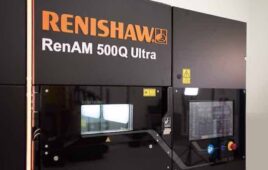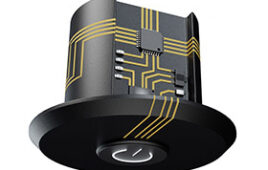Imagine what would happen if designers used additive manufacturing to remake traditional manufacturing assist tools?
Common manufacturing assist devices like this may undergo a radical change with additive manufacturing.
Eckhart, a company that has been building the tools that manufacturers use to make their production lines safe and efficient for more than 60 years will take up that challenge. Eckhart’s ergonomic lift-assist and torque-mitigating tools allow a technician to perform tasks like lifting and positioning a car engine while it is bolted to the chassis. And the company also makes tools that let manufacturers complete high-torque assembly processes where space and part shape limit access. Its tools are used in industries such as automotive, aerospace, heavy construction, medical and others.
Eckhart believes that the tooling industry is ripe for change with the introduction of additive manufacturing technology to help redesign factory tools.
“At Eckhart, we believe that with additive manufacturing, there is a real opportunity to reinvent how industrial tools are designed, manufactured, and ultimately used by customers,” says Eckhart President and CEO, Andy Storm. “Our intent is to completely replace existing metal tools with 3D printed equivalents. The potential for innovation in weight-savings, simplified bills-of-material, and enhanced operator visibility that additive manufacturing affords is unprecedented.”
Eckhart has chosen to work with Stratasys (Nasdaq:SSYS), a global leader in applied additive technology solutions, in an exclusive three-year collaboration agreement to advance the adoption of 3D printing for factory tooling in North America.
Three key ways additive manufacturing can help
Based on the unique ability of additive manufacturing to help drive innovation for next generation factory tooling, Eckhart sees three main ways the additive processes can help the tooling industry:
–Light-weighting and ergonomics: The lighter and more organically shaped a tool is, the easier it is to operate and move around the assembly environment. A strong point of additive manufacturing is its ability to produce organically shaped parts that are lighter than conventional designs produced in metal, while still being strong. Stratasys’ carbon-fiber-reinforced nylon (FDM Nylon 12CF) has a strength-to-weight ratio that enables it to replace metal in many applications.
–Line-of-sight improvement: Additive manufacturing can be used to design voids in a tool. Traditionally made tools often have extra material that isn’t providing a value. By reducing the unneeded material, line-of-sight is improved. By cutting material out you can see more of the assembly operation.
–Simplified build structure and simplified Bill of Materials: Additive manufacturing can be used to significantly reduce the part count of an assembly. By redesigning an assembly of numerous parts into a single part and 3D printing it, designers can reduce the part count and thereby simplify both the build structure and the bill of materials for manufacture.
Eckhart’s 3D printing laboratory is located in its recently opened Advanced Technology Center in Warren, Mich. As part of the partnership with Stratasys, the lab includes printers using Stratasys’ proprietary fused deposition modeling (FDM) 3D printing process. The laboratory has Stratasys’ Fortus 450mc, F370, and Fortus 250mc 3D Printers designed to produce on-demand parts, leveraging production-grade thermoplastics, as well as advanced manufacturing tools. Eckhart also uses a range of Stratasys materials, including the carbon-fiber-reinforced (FDM Nylon 12 CF).
In addition to accelerating the adoption of 3D printing, the partnership will leverage both companies’ expertise in adjacent markets to promote the adoption of Industry 4.0 and the use of micro sensors in 3D printed tools to begin integrating advanced diagnostics that will enable the smart factories of the future.
“The significant advances in micro sensors and position based technologies afford us an opportunity to change how our customers monitor and manage the health of their line,” says Storm. “We’re partnering with the global 3D printing leader whose technology is transforming how, when, and where things are made to integrate advanced technology into our suite of solutions and bring real value by helping Eckhart’s strategic customers accelerate the adoption of Industry 4.0.”
Eckhart, Inc.
www.eckhartusa.com
Stratasys
www.stratasys.com
Filed Under: 3D printing • additive • stereolithography






Tell Us What You Think!